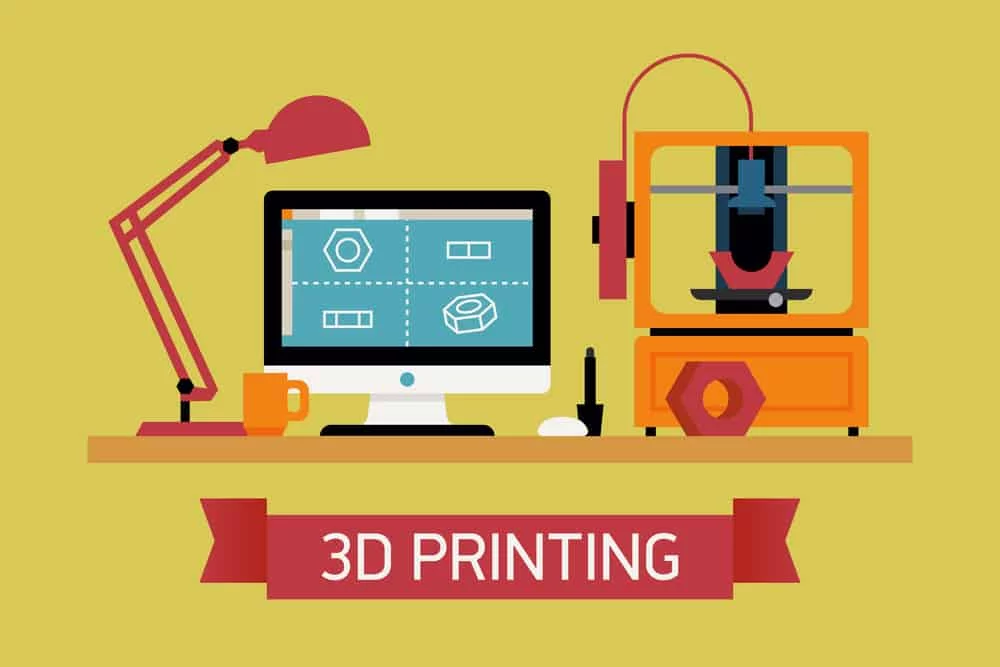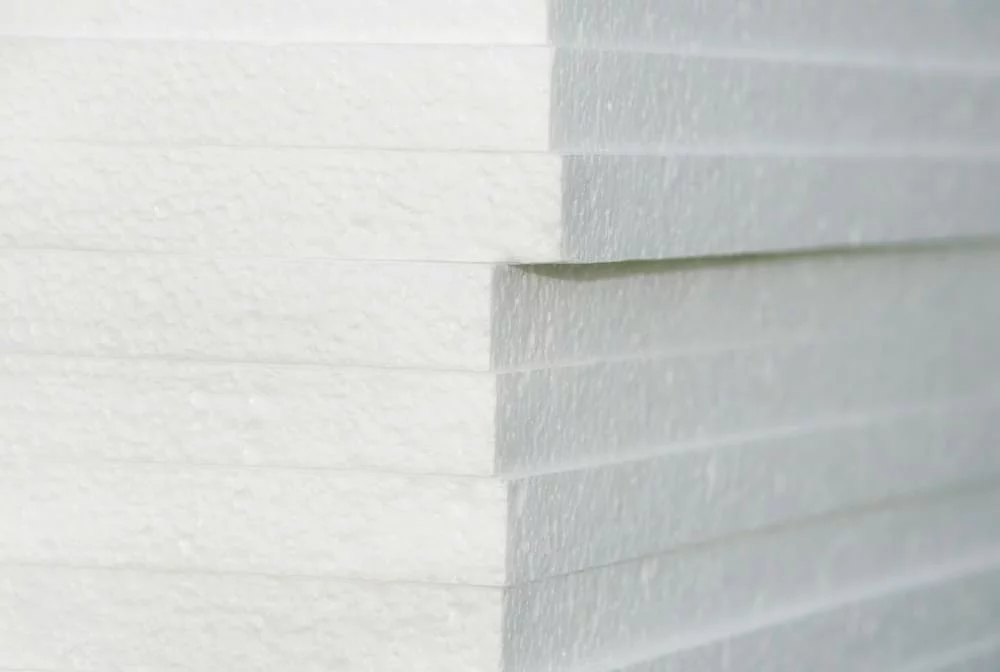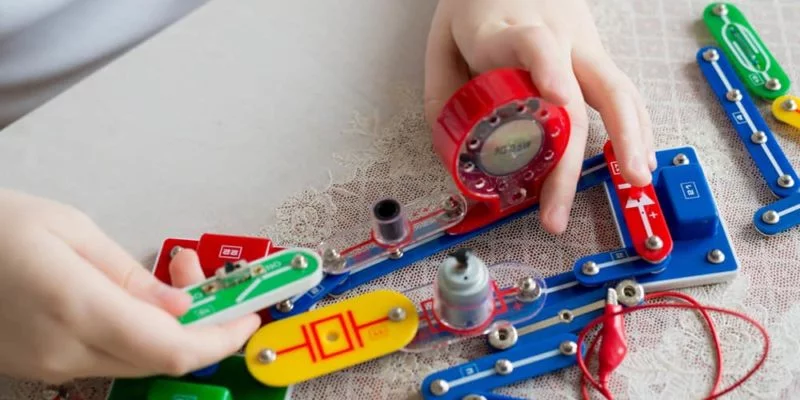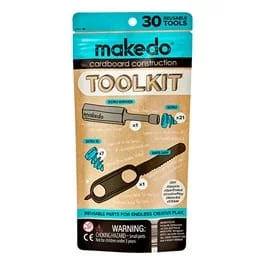Having a dedicated makerspace for kids is a great way to spark your child’s interest in STEM – science, technology, engineering and math – and give her a leg up on college entry, scholarship applications and a secure future. Schools all over the country are even starting to create makerspace labs to foster creativity and and an exploratory way to learn. However, because this is a new trend, caution is warranted and we are here to help guide you though steps to take on how to best protect children of a vulnerable hormonal age. Creating a space that is safe for children requires a little bit of work. Just like there are safer 3D printers out there and ones that can be toxic to children, makerspace items are the same. Here are the things you need to know to ensure your the health of children are not endangered by a hazardous makerspace lab that is contaminated with endocrine disrupting chemicals.
Disclaimer: This post contains affiliate links to Amazon. Clicking and buying doesn’t cost you any more but it supports the work we do here at Mamavation! Thanks!
Table of Contents
Items That Are Dangerous in a Makerspace Lab for Kids
While you don’t want to hinder your child’s creativity, there are some objects that require caution. In designing a makerspace for kids, you need to exercise caution with these items:

Old Electronics And Computer Parts
Some of you may think that reusing old electronics and computer parts is a great way to upcycle the old junk in your attic or basement, but beware. Things that are old were made before laws were passed to clean up dangerous chemicals found in materials. Old computers, especially circuit boards, may contain lead, mercury, arsenic, cadmium, bromine, beryllium and other toxic chemicals. And any computer or electronic that has a cathode ray tube – like old, heavy TV’s and monitors – contains up to 5 pounds of lead! In fact, this issue of how to dispose of old computer equipment is taken very seriously in the Information Technology industry because of the risk of cancer and hypothyroidism.
These chemicals are especially dangerous for children and fetuses, in addition to the standard health problems these toxins pose for any humans.
- Lead: According to the EPA, growing bodies absorb more lead than grown people. This means that developing brains and nervous systems are more susceptible to damage that includes behavior and learning problems, lower IQ, hyperactivity, slowed growth, hearing problems, and anemia. Ingestion can cause seizures, coma and death. In utero exposure can also affect a fetus with reduced growth or preterm birth.
- Mercury can harm developing brain function such as language, cognition, fine motor skills, visual spatial skills, attention and memory. For anyone, mercury can impair vision, speech, hearing, walking, muscles, and coordination.
- Arsenic: The CDC’s Agency for Toxic Substance & Disease Registry say there is some evidence that early exposure to arsenic, including in utero, may cause infant for fetal death, in addition to low birth weight, fetal malformations and more. Arsenic is also a known carcinogen linked to lung and skin cancer. Smaller amounts can cause nausea and vomiting as well.
- Cadmium: A Harvard University study showed that “children with higher cadmium levels are 3 times more likely to have learning disabilities.” Exposure can trigger neurological problems like intellectual disability and lower IQs. High amounts can damage lungs and cause death but even low levels can do harm. Cadmium may also be linked to breast cancer.
- Bromine: Computer parts contain both bromine. Bromine displaces our intake of iodine, which can have lots of implications, from increasing the risk of breast cancer to disrupting thyroid function. This can also harm ovaries and prostates.
- Beryllium can affect the respiratory system or the skin. Even with infrequent exposure, and can retain a lifelong risk of developing a disease, long after exposure. While not everyone has a reaction, long term exposure can result in lung cancer or chronic disease. The beryllium found in computer parts may not be that high, but it’s certainly another unsafe particle found in computers.
Many of these chemicals impact the thyroid. They are also known as endocrine disruptors. We are seeing widespread early onset of puberty, particularly in girls, due to these toxins. Boy are also being affected, by having lower sperm counts. They are linked to Type 2 diabetes and may also be linked to Type 1 diabetes during puberty. Timing of exposure can cause more harm to a teen in puberty.
Additionally, according the EPA, electrical devices and appliances that were manufactured 30 years ago or more may also contain PCBs, a toxic chemical that is now illegal to use. PCBs have been linked to autism as well as cancer, immune dysfunction, neurological effects, endocrine disruption and more.

3D Printer Toxic Materials and Off Gassing
In our recent report on 3D printers, we discussed the unique dangers posed by these printers, which can emit dangerous nanoparticles that you can inhale. Nanoparticles are extremely tiny particles, so small that they can bypass your nose hairs and enter the lungs, that can travel in the air, fumes and dust your printer gives off. When those nanoparticles contain toxic substances, they can do damage to your skin, lungs, respiratory tract and your gut. Prolonged exposure can wreak havoc on the central nervous system and some particles may even cause cancer.
Steer clear of materials other than PLA for printing and learn which printers and precautions are best. There are safer options that are also affordable. But please note that some 3D printers should never be used inside a room with children under the age of eighteen with little or no ventilation.

Leaded Solder
Soldering is a technique that allows your child to bond together metals, including electrical wires, so your maker can create anything from metal jewelry to robots. You must use a soldering iron, which is heated, and a solder material. The solder acts like a kind of glue to keep the metals bonded. Obviously, you want to make sure that you teach your child how to run a heated machine such as this, but a bigger concern is the solder material itself.
You have two options: leaded solder, which usually contains 40% lead. Most of the fumes it gives off are not from the lead melting. However, the second option, lead-free solder, can give off even more toxic fumes than the leaded because they are often made of PVC or chlorinated plastics. PVC is a known carcinogen, according to the World Health Organization. Additionally, burning PVC or chlorinated plastics can release dioxin, another known carcinogen. Lead-free solder is more expensive and more difficult to work with and actually may be less safe than leaded.

Burning Styrofoam to Make Shapes
Another common technique that makers use is to create custom shapes using styrofoam. To cut the Styrofoam, you need to use a hot wire cutter, which effectively burns the styrofoam. Unfortunately, this has health hazards. Styrofoam is made out of polystyrene foam derived from styrene, which the International Agency for Research on Cancer has labeled as “possibly carcinogenic to humans.” Occupational Safety and Health Administration has acknowledged that styrene is an irritant that can also cause upper respiratory and gastrointestinal issues.
Burning styrene releases dangerous vapors into the air, which can easily be absorbed into the lungs. In addition to the fumes of styrene, it also releases carbon monoxide, PAHs, and carbon black, all of which can cause health issue ranging from mild respiratory issues to cancer.
If you must burn styrofoam to accomplish a task, make sure it’s done outside where there is plenty of ventilation. Indoor air quality for children can be compromised if this is done inside the classroom or the house. And we do not recommend children of any age do this themselves. This is a job for adults using a mask to keep from inhaling the dangerous fumes.

Using Plastic Items –Check for resin codes
If your child is creating \ or melting with plastic materials, it’s very important to check the resin codes – those numbers on the bottom of your plastic items that tell you if your plastic is safe or not. You need to know the difference between safe and unsafe plastic. want to make sure that you only use plastics with the codes #2, #4 and #5.
Plastics with other codes have serious risks:
- #3: PVC – Vinyl: These plastics can contains lead, phthalates, dioxin and more. You clearly do not want to be burning these, but I’d be hesitant about working with them at all.
- #6: Polystyrene: As we discussed above, this has numerous risks when heated or burned.
Plastics with codes #1 (PET/PETE) and #7 (can be many things, but often containBPA) have some hazards. Make sure you never heat any plastics with code #1, such as water bottles. We recommending avoiding melting plastic overall.
Additionally, a 2011 study found that most plastics leach plastic. In fact, BPA has been found to leach even at room temperature. It’s important to make sure that your children avoid these plastics, particularly putting them in their mouths. Any exposure can be unsafe.

Safety Practices
Many of the tools your maker uses can be harmful. Welding, soldering, 3D printing, glue guns and saws can all put your child at some type of risk. It’s important to take precautions when setting up a space and engaging your child in activities. Here is a list of our best safety practices when setting up a makerspace to keep your child safe:
1. Know All The Safety Guidelines
Make sure you know all the dangers and guidelines of any tools or materials you let your child use first – from soldering irons to sewing machines. Test it out yourself and read all the manuals (listen up, dads!) before you let your child run the equipment. In addition, teach your child all the safety guidelines she needs to know.
2. Create Safety Procedures
Do you know what to do if your child gets a metal speck in her eye? What is the best treatment for a burn from a glue gun? When should you use water to put out a fire – or avoid water? In addition to knowing all the safety guidelines of the devices in your child’s makerspace, figure out what to do in an emergency and create a safety procedure list for you and your child. We recommend pinning up a laminated card of safety rules that address all the equipment in your space.

3. Supervise Your Child
When your child is starting out, keep a close eye on her as she uses the various tools and whenever you get any new tool. How much or often you supervise depends on the age and maturity of your child, as well as how quickly they adapt to using a tool and how well they understand its dangers.
4. Set Up in a Well-Ventilated Area
Solders, 3D printers and glue guns can pose safety hazards from fumes so you want to make sure that your space is well-ventilated to ensure that any hazardous particles or fumes can be vented.
5. Use Protective Gear
Goggles, ear plugs, dust masks, aprons and gloves are some of the gear you should stock up for your child to wear, depending on which tool she’s using. Create a box with these items and review with your child what should be worn for each tool.
6. Stay Safe With Styrofoam Cutting
Only adults should do any styrofoam cutting activities. Even then, make sure you are using a hot cutter in a well-ventilated area, with a mask, for brief periods of time.
7. Choose the Right Plastics
Stick to resin codes#2, #4 and #5 when working with plastics as much as possible. Do not heat codes #1, #3, #6 or #7, and make sure your child does not mouth the plastics.
8. Use Kid-Safe Maker Tools and Kits
One of the best precautions you can take is to buy kits already designed for children. That will allow you to quickly learn any safety hazards of the equipment and the best age range for each tool.

Maker Kits for Your Child
The easy way to create a safer makerspace for kids is to buy ready made kids designed specifically for kid. Here are some of our favorites:
- Makey Makey: This site carries products, apps and all kinds of information for budding makers. Their Invention Kit for Everyone is a Great Starter set.
- Snap Circuits: This company sells a wide range of circuit and other tools to learn about programming. Check out their Snap Circuits Jr. SC-100 Electronics Discovery Kit for ages 8 and up.
- Soft Circuits: These are circuits that can be sown into fabric to create items such as teddy bears or plush toys. There are not too many premade kits but you can easily search Pinterest for a ton of ideas on creating these circuits. Last Christmas, we got one similar to this soft circuit Teknikio Fabtronic Sewing Set:
- Squishy Circuits: This brand uses gluten free, nontoxic dough for a unique and fun way to get your child started with circuits! Check out their Squishy Circuits Standard Kit.
- Magnets: No makerspace is complete without magnets…it’s a great way to quickly and easily stock your space and kids love them! Check out Magformers for a kit that is kid-friendly and magnetic.
- Sugru Moldable Glue: Their Family-Safe moldable glue is designed specifically to be safe for kids to use.
- Makedo makes products that allow your child to craft using cardboard, and they have safe toolsets, like their Safe-Saw.

- Edison Robot: No Makerspace is complete without K’NEX or Legos. This robot kit is Lego compatible too! What more do you need?
If you want to learn more about creating more in-depth makerspaces, or your child is growing and you want to step up the tools and resources, you should check out MakeZine.com, which contains a wealth of information on projects, guides tools and more for all makers. Also check out this in-depth list of makerspace tools for all ages










 3D Printers: Which Ones Have the Safest Ingredients for Your Family
3D Printers: Which Ones Have the Safest Ingredients for Your Family
Whenever you get an academic writing assignment, you realize how frustrating it can be. Besides, lack of ideas is something that the majority of students faces quite often. For this reason, you obviously need to find a quick solution to your academic writing problem.